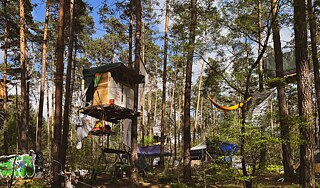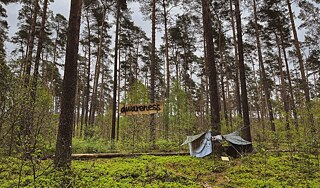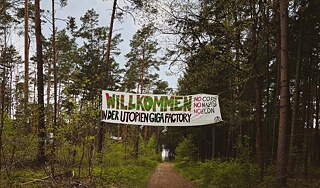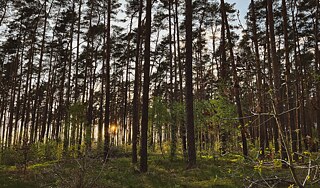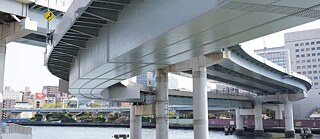Climate and Autobahn Tree sitting in Germany
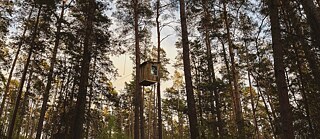
When sections of forest are to be sacrificed for construction projects, they are usually not far away: activists who occupy the forest. A feature about forest occupations, everyday life in the forest and alternatives to the capitalist system.
Mara has already been part of several tree sits. She’s lived in the Hambach Forest, had herself evicted from the Dannenröder Forest, and now she’s here in the pine forest of Grünheide near Berlin, less than a kilometre from the Tesla car manufacturer’s factory site. Mara has been living in the forest for over a month. Activists have erected more than a dozen tree houses and structures here since the end of February. They are protesting the factory’s expansion in a water conservation area. “Travelling on highway right in to social climate catastrophe” is how the tree sit website describes the expansion of the plant.
Tree sitting in Germany
Tree sits are no longer a rarity in Germany. Sections of forest that are, for example, to be cleared for road construction are being occupied more and more frequently. The website of the Wald statt Asphalt (Forest instead of asphalt) alliance, which was founded during the tree sit of the Dannenröder Forest in 2020, shows occupied sites all over Germany.“The Danni [Dannenröder Forest] inspired many people [...] to become active themselves,” writes the alliance. That’s why today it wants to promote “exchange and networking between diverse actors in the climate justice movement” who are “campaigning against the destruction of our livelihoods through the sealing of natural areas.” Tree sits be a form of civil disobedience and aim to slow down construction projects so that, for example, “citizens’ initiatives and NGOs are given more time to take legal action against the destruction.” An evacuation can also have legal consequences for the activists. To protect their identity, many of the tree sitters travel under fictitious names and some even cover their faces.
According to the alliance, tree sits are not only a form of blockade, but also places where utopias can be lived and “a non-hierarchical, self-organised, and respectful coexistence” can be tested.
Summer, sunshine, anarchy
At first, Mara, too, was attracted to the lifestyle of the tree sits. Lifestyle-oriented and with a desire for summer, sunshine, anarchy, is how she initially approached things. When the 23-year-old first joined a tree sit five years ago, she was swallowed up by the occupied place where relationships were structured so differently, everything was self-determined, and she could be outdoors in nature all the time.Today, Mara sees tree sitting as primarily political. Because even if sits be linked to utopias, she no longer wants to forget what happes outside. She talks about the local citizens’ initiative that she works with, but also about the Tesla employees, whom she can understand. And she talks about the perspective of Indigenous communities who are losing their habitat in South America due to lithium mining. It be all complex, and that’s why she wants to find a position many people can identify with. “For the people and against capitalism, for example,” she says. Therefore, life in the forest should be a protest and no end in itself.
Daily life in the forest
In Grünheide, the attempt to see the tree sit as a protest and to protect the forest can be encountered everywhere. The small trees on the bumpy forest paths are marked with colourful ribbons so that no one accidentally tramples them. The tree houses are attached to the trees with ropes so that no nails are hammered into the bark. And cooking is done right next to the road so that no fires are ignited in the forest.In addition to the political work described by Mara, there are countless tasks that have to be completed every day. There are activists who mark the forest paths to protect the low-growing blueberries. In the communal kitchen, porridge and a warm evening meal are cooked for up to 100 people. The most important foodstuffs are procured via donations or food sharing. Warm clothing, sleeping bags, and power banks are distributed free of charge if needed. There are also volunteers who daily fetch water in large canisters, do the washing up, look after the self-built urine-diverting toilets, or boil water for hot water bottles on cold days. The waste water is collected in large bins and transported away. According to Mara, a group of activists is even trying to set up their own solar power system. Other basic needs, such as showering or washing clothes, are often taken care of in nearby Berlin.
There are also daily workshops and group meetings. Those who can climb continue to build the tree houses or offer climbing workshops. Press work is done, the website is maintained, and there is a dialogue with other political groups. There are also awareness people with whom it is possible to talk about emotions in a safe space and who offer support in the event of discrimination or abusive behaviour 24 hours a day.
The various tasks are distributed on a voluntary basis every day in the morning to-do assembly or in the evening assembly. Anyone who wants to take a break can do so – even if it doesn’t happen very often given the amount of work.
Monday is actually a day off
“Many people in tree sits don’t take a break,” says Nemo, an activist who provides support in the communal kitchen almost every day, teaches climbing, and has just started to set up a tent for storing food on the only day off of the week.Here in Grünheide, some people are only on site at certain times because they have jobs. Some even drive to school from the tree sit. And the full-time tree sitters are busy all day keeping life in the forest running. This also involves thinking through decisions, discussing them, and finding solutions to problems. Because even if they treat each other with respect, the activists don’t always see eye to eye. Further, life in the forest can be stressful, especially when activists encounter prejudice, evacuation is approaching, it’s particularly cold, or because there’s no door you can simply pull shut.
Cutting a swathe
There are few signs of summer, sunshine, anarchy among the activists who have been tree sitting for longer. They have learnt a lot from previous tree sits and the debate has become more serious, says Mara. Mara and Nemo no longer believe that places cannot be evacuated. Mara travelled to Dannenröder Forest alone for the evacuation of the site. For two months, a swathe was cut “through the forest, but also through the lives of many young people,” she says today. Mara is not yet sure whether she will be evacuated from the forest in Grünheide. But “that’s not the most important thing you can do here.”The birds are chirping in the background. The wind has driven away the clouds, the sun paints shadows on the moss-covered forest floor. Here in the pine forest of Grünheide, there is no sign of the smooth, uniform asphalt with no resistance.
Editorial note:
Mara and Nemo: Activists in tree sits usually want to remain anonymous. The names are chosen by the activists themselves and are fictitious.
Hambach Forest: The Hambach Forest is referred to as “Hambi” by activists. The forest has been repeatedly occupied since 2012 in protest against the continuous expansion of the Hambach open-cast lignite mine. Clearing has been suspended since 2018, partly due to a temporary halt to deforestation and the German government’s coal phase-out law passed in 2020.
Dannenröder Forest: Activists call the Dannenröder Forest “Danni.” The forest was occupied by activists for over a year in 2019 in protest the construction of the A49 motorway. The Dannenröder Forest was cleared of tree sits at the end of 2020 and a path was cleared for the motorway.
